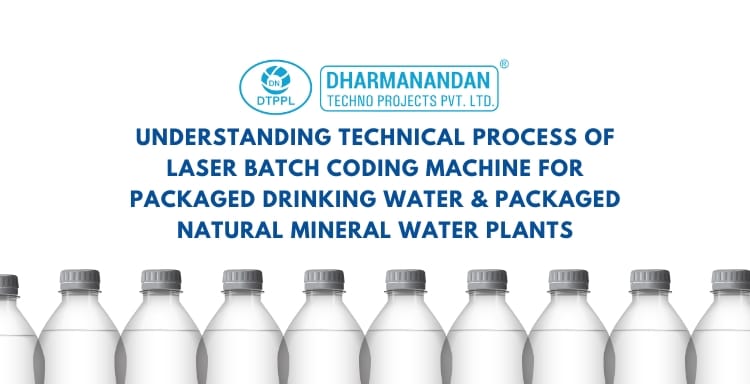
Table of Contents
Technical Process of Laser Batch Coding Machine for Packaged Drinking Water & Packaged Natural Mineral Water Plants
February 17, 2025
In modern manufacturing, precision and efficiency are paramount. Batch Coding Machine technology plays a critical role in ensuring product traceability, brand authenticity, and regulatory compliance. Among these, the Automatic Batch Coding Machine leveraging laser technology has revolutionized the way manufacturers mark their products. Unlike traditional ink-based methods, laser batch coding creates permanent, high-contrast markings without direct contact, making it ideal for industries like packaged drinking water/mineral water plants.
1. The Precision of Laser Batch Coding Machines
At the heart of an Auto Batch Coding System is the power of light. Instead of using ink or labels, it employs a high-intensity laser beam to etch markings directly onto surfaces. This results in highly legible and durable batch codes, manufacturing dates, expiry dates, and QR codes—essential for ensuring compliance with regulatory standards.
a) Choosing the Right Laser Technology
The efficiency of an Auto Batch Coding Machine depends on selecting the right type of laser technology. Different lasers work better with specific materials, ensuring optimal absorption and precision:
Fiber Lasers: The Industrial Standard
- Technical Principle: These use optical fibers doped with rare-earth elements like ytterbium to amplify light.
- Process: Diode lasers pump light into the fiber, which excites the atoms, leading to a coherent and high-intensity beam.
- Best For: Marking metals and some plastics due to their strong absorption of infrared wavelengths.
- Advantages: High durability, excellent beam quality, and minimal maintenance.
- Disadvantages: Limited effectiveness on certain organic materials.
CO2 Lasers: Perfect for Organic and Non-Metallic Surfaces
- Technical Principle: Uses an electrically stimulated gas mixture (CO2, nitrogen, and helium) to generate a high-powered infrared beam.
- Best For: Organic materials like plastic, glass, and packaging films.
- Advantages: High speed, cost-effectiveness, and strong material absorption.
- Disadvantages: Shorter lifespan and higher maintenance needs.
UV Lasers: Precision for Sensitive Materials
- Technical Principle: Uses frequency conversion to produce shorter UV wavelengths.
- Best For: Heat-sensitive materials like PET bottles used in the beverage industry.
- Advantages: Low heat impact, high precision, and ability to induce photochemical reactions for color contrast.
- Disadvantages: Higher cost and lower marking speeds compared to fiber and CO2 lasers.
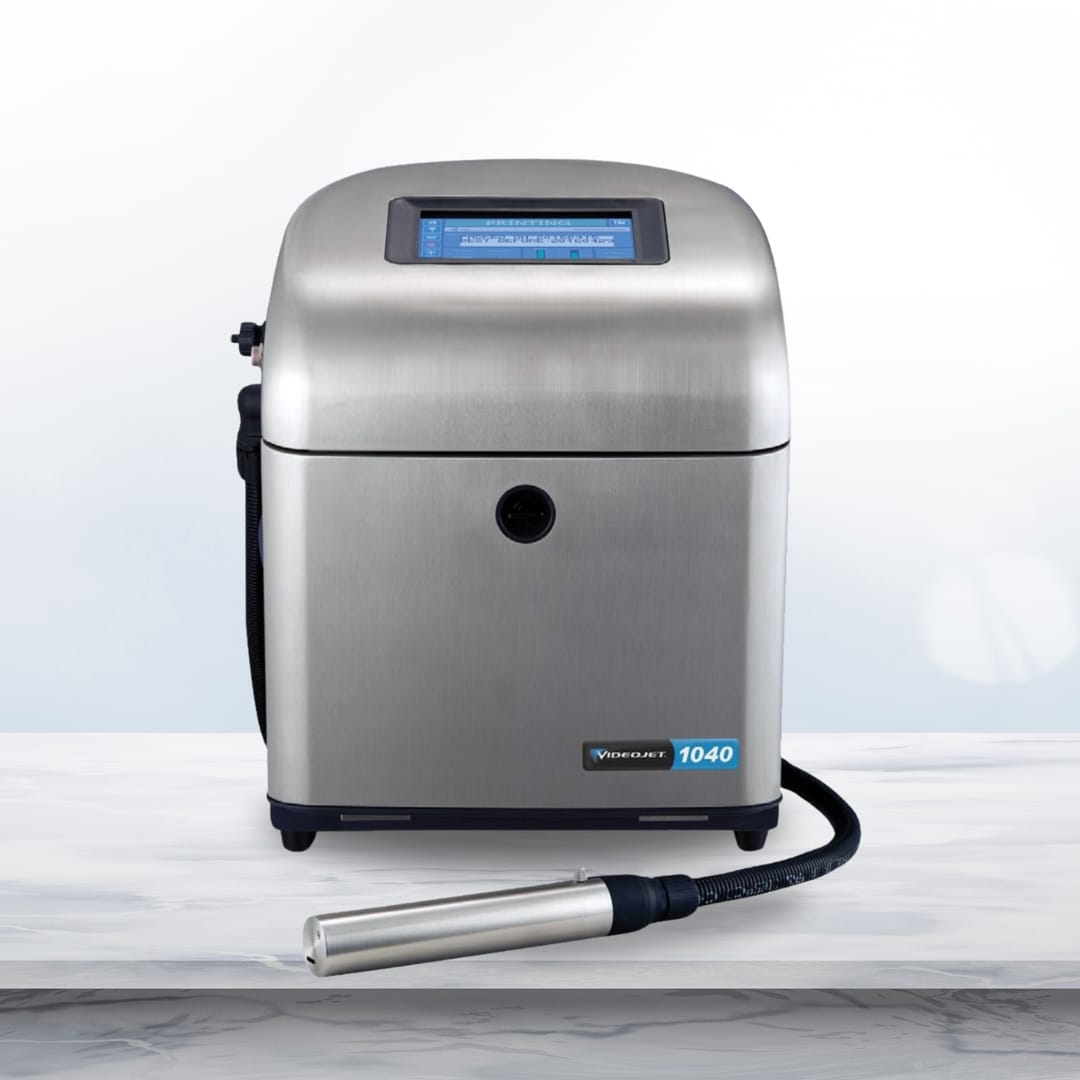
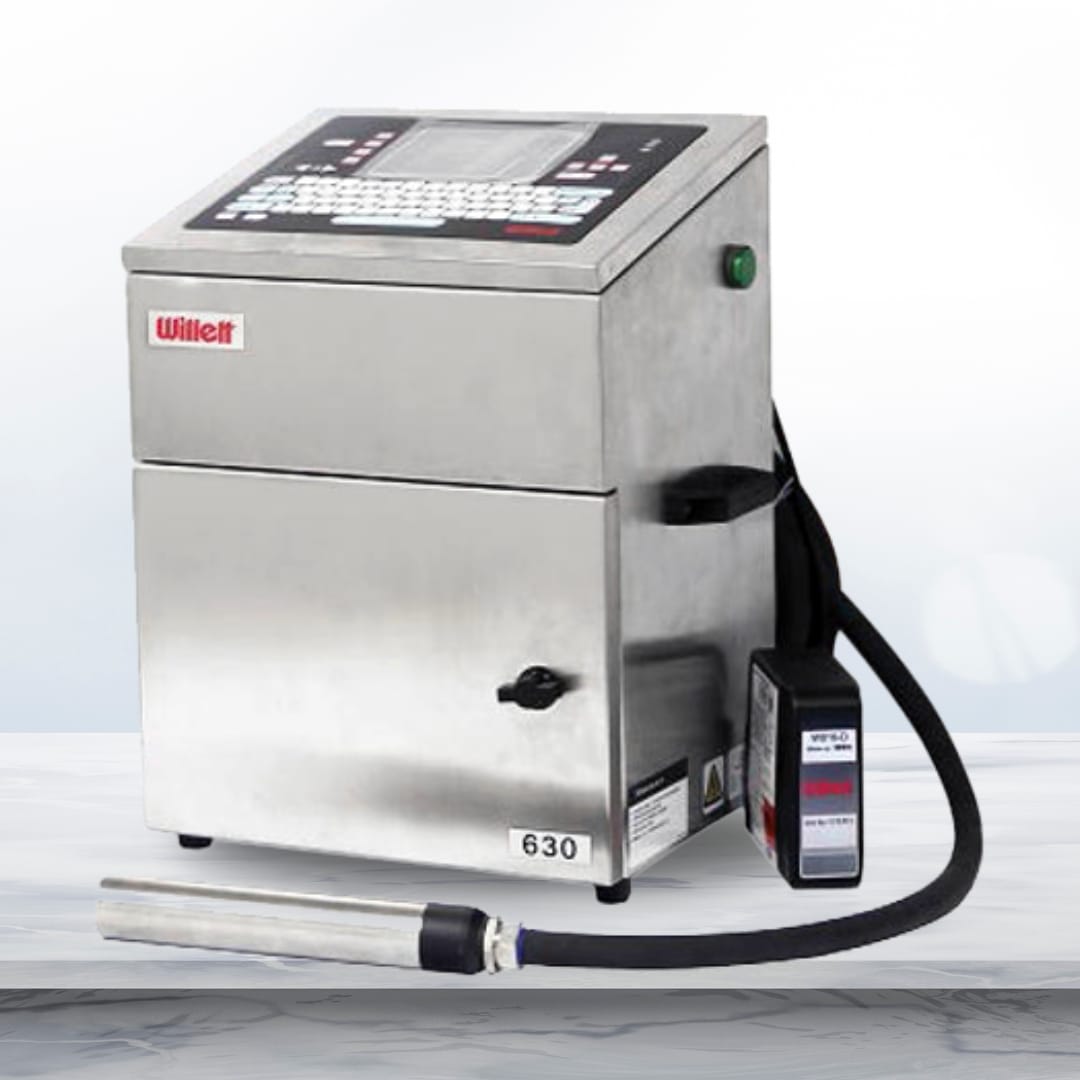
2. How Laser Batch Coding Machines Interact with Materials
A Manual Batch Coding Machine relies on ink-based marking, whereas laser technology operates through direct material interaction. The laser’s wavelength determines how well it is absorbed by the target material, influencing the marking type and quality.
a) Thermal Effects
When laser energy is absorbed, it generates heat, leading to:
- Engraving/Ablation: Surface material is vaporized, creating deep and permanent markings.
- Foaming: For plastics, gas bubbles form under the surface, altering its reflectivity to create contrast.
- Melting: The surface liquefies momentarily and re-solidifies, ensuring smooth and tamper-proof codes.
b) Photochemical Effects (UV Lasers)
Unlike thermal interactions, UV lasers alter chemical bonds, producing high-contrast marks without heat damage, making them ideal for fragile packaging materials.
c) Types of Markings
Laser marking can take various forms:
- Annealing: A heat-based reaction on metal surfaces, changing color without removing material.
- Color Change: Common in plastics, achieved by precise energy deposition.
- Engraving: Removing surface layers for deep, visible markings.
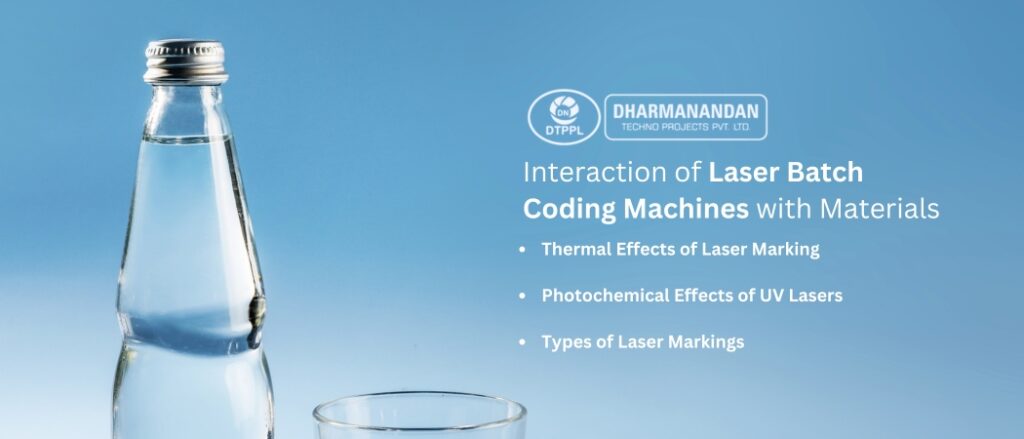
3. Automation and Control in Laser Batch Coding Machines
An Automatic Batch Coding & Printing Machine is designed for seamless integration into high-speed production lines. Several key components enable precision and efficiency, especially in mineral water plant industry:
a) Beam Delivery System
- Galvo Scanners: High-speed mirrors deflect the laser beam for rapid marking.
- Fixed Beam Delivery: The workpiece moves while the laser remains stationary, suited for batch processes.
b) Motion Control System
- Conveyor Integration: Sensors detect product movement, triggering the laser at the right moment.
- Rotary Tables: Used for curved or cylindrical objects like bottles.
c) Software & User Interface
- Marking File Formats: Supports DXF, AI, BMP, JPG for different marking designs.
- Parameter Control: Adjusts laser power, speed, and focus for different materials.
- Job Sequencing: Allows automation of multiple marking tasks for efficiency.
4. Safety Considerations in Laser Batch Coding
Unlike a Manual Batch Coding Machine, laser technology requires strict safety measures to prevent hazards. Some essential protocols include:
a) Laser Safety Classification
- Class 4 Lasers used in industrial marking are hazardous without proper shielding.
- Enclosures and interlocks prevent accidental exposure.
b) Fume Extraction
- Essential for removing harmful particles generated during marking.
- Uses HEPA and activated carbon filters to ensure air quality.
c) Eye Protection
- Operators must wear laser-specific safety eyewear to protect against accidental exposure.
5. Components and Their Functions
The efficiency of a Batch Coding Machine depends on its core components:
a) Laser Source
- Gain Medium: Defines the laser’s wavelength and energy output.
- Pump Source: Provides the initial energy for light amplification.
- Resonator: Enhances the laser’s intensity for precision.
b) Beam Delivery System
- Scan Lens (f-theta lens): Maintains uniform focus across the marking field.
- Beam Expanders: Adjusts beam diameter for specific applications.
c) Control System
- Pulse Control: Adjusts pulse duration and repetition rate for optimal engraving.
- Motion Controller: Synchronizes laser movement with production speed.
- Software Integration: Interfaces with CAD/CAM for seamless automation.
d) Fume Extraction System
- Uses HEPA and activated carbon filters to capture airborne particles.
- Essential for maintaining operator safety and equipment longevity.
6. Applications of Auto Batch Coding Machines Across Industries
The Auto Batch Coding System is widely used in multiple industries:
- Food & Beverage: Permanent marking on plastic and glass bottles.
- Pharmaceuticals: Serialization for compliance and anti-counterfeiting.
- Electronics: Marking circuit boards and components with traceability codes.
- Medical Devices: Engraving unique identifiers on surgical tools.
- Aerospace & Automotive: Etching serial numbers on metal parts.
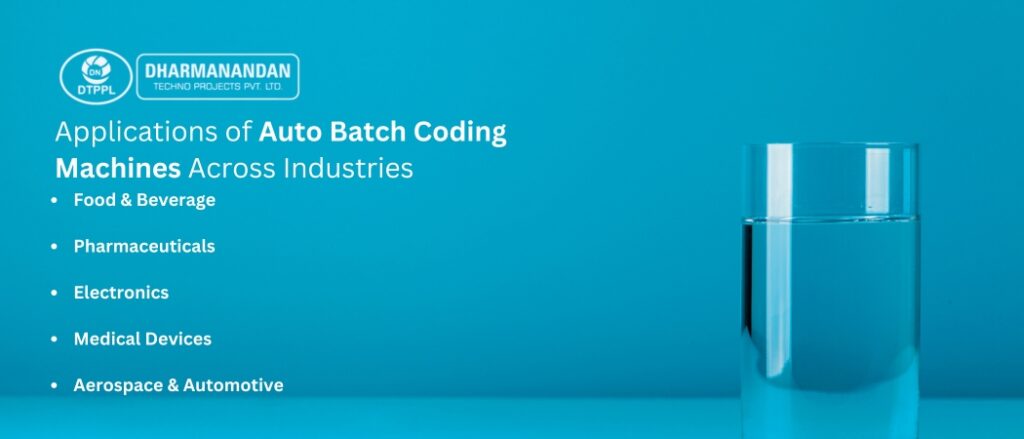
7. Advantages of Fully Automatic Laser Batch Coding
An Automatic Batch Coding Machine offers numerous benefits:
- Permanence: Laser marks are resistant to wear and environmental factors.
- Precision: Enables high-resolution marking for intricate details.
- Non-Contact: Prevents damage to delicate materials.
- Versatility: Works on metals, plastics, ceramics, and more.
- Cost-Effective: Eliminates the need for consumables like ink and labels.
- Eco-Friendly: Produces no harmful emissions, unlike traditional methods.
8. The Future of Laser Batch Coding
The Manual Batch Coding Machines of the past are being replaced with advanced laser solutions. Future trends include:
a) Smart Coding and Industry 4.0
- IIoT Integration: Real-time monitoring for predictive maintenance.
- Cloud-Based Solutions: Remote control and job automation.
- AI Optimization: Auto-adjustments for marking consistency.
b) Advanced Laser Technologies
- Ultrafast Lasers: Higher precision with minimal heat impact.
- Adaptive Optics: Real-time beam shape adjustments for consistent quality.
c) Security & Sustainability
- Invisible Marking: Anti-counterfeit technology using UV light.
- Blockchain Tracking: Enhancing traceability with secure data integration.
- Energy Efficiency: Lower power consumption and improved cooling systems.

Conclusion
Laser batch coding is more than just marking products—it’s about creating a permanent identity that ensures quality, compliance, and traceability. Whether in packaged drinking water or packaged natural mineral water plants, an Auto Batch Coding Machine provides unmatched efficiency and reliability. As technology continues to evolve, laser marking is set to become smarter, more sustainable, and more adaptable to industry needs, cementing its role as the future of batch coding solutions.
About Author

Director – Global Marketing and Sales
Mr. Bhavesh from Dharmanandan Techno Projects Pvt. Ltd. has played a pivotal role in elevating the DTPPL brand to the global stage, leveraging his exceptional expertise in marketing and communications. He is committed to helping clients achieve significant growth while strengthening their own brands. Dharmanandan Techno Projects Pvt. Ltd. is a leading manufacturer and supplier of water purification systems and turnkey solutions for mineral water plants. With years of experience in designing and delivering high-quality water treatment solutions, the company provides end-to-end services, including system design, installation, maintenance, and ongoing support. Specializing in scalable and customizable water plants, DTPPL has successfully served industries worldwide, ensuring clean and safe drinking water across diverse applications.
